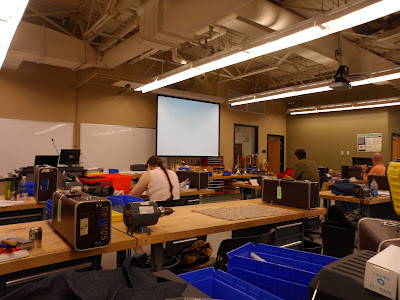My very dented mouthpiece shank
Another angle of my dented mouthpiece shank
After using a mandrel to get the worst of the dents out (a cone shaped thing I put in the bench motor (not turning it on) and tapping lightly on the mouthpiece)
I was not really pleased with my results so I put the mouthpiece in a receiver (brass thing on this picture), put a dent ball on a mount, and tapped lightly on it.
The receiver
My mouthpiece shank after using the dent ball, now I'm happy!
My mouthpiece before I made it smoother with my burnisher (I put it in receiver and then into a mini lathe (didn't fit into my bench motor) and pressed it down with my burnisher)
My mouthpiece after smoothing it out. Only the deep dents are left, but now it can be used to play without hurting players.
The other end of my dent rod, buffed and nice.
This little thing started out as a tube with a hole in it. I made a bevel on one side and made the hole bigger on the other side.
This will hold draw/pull knobs in their rightful place when soldering.
That's my dent ball mount. It doesn't look impressive, but we had to measure the threads on the screw, and make the rod be able to accept that screw. This was done on a mini lathe.
I have to take the mouthpipe off this trumpet because it has really bad red rot.
The trumpet I got is really pretty, the bell says "Artist" and the mouthpiece receiver says "Western Germany".
After taking the mouthpipe assembly apart, except I have to take the receiver and the outer tube on the other end.
This is the mouthpipe completely taken apart. Taking off the receiver was hard but with help from my classmate Billy Turner I was able to get it off.























































